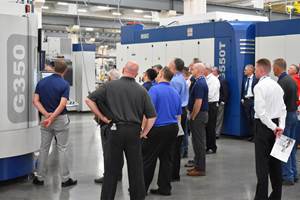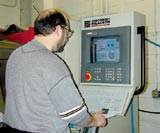Expanding The Toolmaker's Role
Skilled employees from this shop's mold machining area apply their expertise to running production batch machining jobs better.
Share




Brenner Tool is a job shop. It's a big job shop.
The 400-employee contract manufacturer in Croydon, Pennsylvania, has areas devoted to mold making, die making, production machining of small parts and production machining of large turbine parts on vertical lathes. It also has an aerospace division that includes machining as well as finishing processes such as anodizing. Each of these disciplines within the company could qualify as a significant enterprise on its own. But because they have been combined in one company—and because the company has been successful at encouraging employees from separate divisions to pool their experience—Brenner Tool benefits from synergies that help the company in all of its pursuits. Employees from various disciplines all teach one another what they know well.
The area devoted to production batch machining—part of the company's mold division—illustrates how all of the different disciplines benefit. One example relates to through-coolant drills. When the production machining area had a need to begin using this type of drill extensively, it drew on expertise in the die machining division to use the tooling more effectively. Another example relates to vacuum workholding. The production area knew little about this technology, but the aerospace division knew a great deal. The aerospace group even provided one of its large-capacity vacuum pumps to take the place of an off-the-shelf pump that proved too small for the application the production area had in mind.
But a far more significant example of sharing expertise between disciplines relates to the employees themselves. Brenner Tool uses toolmakers—employees who developed their skills and knowledge in mold machining—to run batch production jobs.
The approach is precisely opposite that of a great many contract manufacturers. Many successful shops today have changed their processes on the shop floor to make them more rigidly defined, so shopfloor employees with less skill and experience can work effectively. Brenner Tool, by contrast, uses highly skilled production machining personnel in combination with a more open process. Toolmakers in this area are encouraged to take their own initiative to find more productive ways to machine each part.
For example, in his search for ways to machine a complex miniature gearbox more efficiently, mold division manager Mike Magas placed a sample of the part on every production employee's desk.
"A dollar a minute" is a phrase he uses repeatedly when he seeks the toolmakers' input in this way. The refrain is a reminder that even tiny efficiency improvements have value. The seconds add up . . . and the shop stands to earn at least a dollar more for every 60 seconds it can shave off of the entire production run for a particular batch of parts.
Mr. Magas says there are multiple reasons why a toolmaker can be particularly effective at finding more efficient ways to machine a production job. Any batch part is probably going to be part of an assembly, he notes. A skilled toolmaker is adept at the sort of "tolerance management" necessary to achieve the part's required fit without spending the tolerance window too early in the machining process, and without spending time machining non-critical features to an accuracy greater than their function requires.
Another reason the toolmaker can perform effectively in this role has to do with managing setups. The toolmaker is used to looking at complex parts with an eye toward how to machine them with the fewest setups possible.
Toolmaker Dave Toppin jokes, "It's really just a matter of being lazy."
Sample Parts
Three recent production jobs show the kind of processing strategies the toolmakers use to run batches more efficiently:
- Figure 1. Machining several units of this part from a single bar saves on setup time. It also saves on cycle time, because one tool can machine the same feature in several different pieces at the cost of just one tool change. In the machining process for this part, the final cut is the pass with a saw blade that separates the bar into individual units when all of the milling and drilling is done.
- Figure 2. One of the most costly features of the part pictured here is a single hole (not shown) that enters the side of the part, and enters that face at an angle. To machine this particular hole more efficiently, toolmakers machine the holes shown in the photograph to a greater level of accuracy than what the customer requires. This lets them use these holes for location. The more precise holes mate with a precision fixture that holds the part at just the right angle for the odd-angle hole. The same fixture holds several units this way, allowing the odd hole to be drilled into several pieces in a single setup.
- Figure 3. These forming die components are part of a family of parts that includes 80 variations. Though parts from this family are machined in large volumes, each run generally consists of a large volume of distinctly different pairs. To machine these parts effectively, says Mr. Toppin, the key was to recognize what dimensions are common to every variation. Finding the common features allowed toolmakers to design a modular fixture that could be adapted to any variation in the family. Changing jo blocks and other components of the fixture lets the machine operator change over from one variation to the next in under 15 minutes.
The search for commonality is an element of all of these processes. Separate units are machined in a single cycle, and family variations are machined on a common platform. A toolmaker is used to running parts in quantities of one. And as the first example illustrates particularly well, sometimes the most efficient way to machine a production batch is to transform that batch into a single piece.
However, the toolmaker is also no stranger to repetition. "I've worked on 80-cavity molds," Mr. Toppin says. "A job like that is a lot like batch production."
In other words, mold machining and production machining are not all that dissimilar.
Cost And Benefit
Using high-skill employees on production jobs that are sometimes low in complexity does come at a cost, says Mr. Magas. He says Brenner Tool sees a return on that investment in several ways.
One benefit is the more efficient machining that results from having a larger number of experienced metalworking employees available to think about each job. In shops where the process engineering knowledge is located entirely in the engineering or programming department, jobs are often run inefficiently simply because there is a lack of time and lack of people available to imagine how to run them better. By contrast, the toolmakers at Brenner Tool often can't help but to conceive more efficient ways to run the jobs that come their way.
Another benefit is the more efficient use of these toolmakers. The cyclical nature of Brenner Tool's mold business means the amount of mold machining work the shop has in-house at any given time can vary considerably.
But perhaps the most important return on investing more knowledge and creativity into how each job is machined is the stronger relationships with customers that result. "We want to look at each customer as a client who will continue to be a source of work in the future," Mr. Magas says.
The die components shown in Figure 3 illustrate this principle in action. Studying the entire family of parts let Brenner Tool engineer a single machining platform that works across all of the variations. In the future, the customer for this part may create more variations still. If so, there will be little question which shop is best prepared to take on the additional work.
Related Content
Grob Systems Inc. to Host Tech Event With Industry Partners
The 5-Axis Live technology event will highlight new machining strategies for optimizing the production of complex medical, aerospace and mold/die parts.
Read MoreHow to Achieve Unmatched Accuracy in Very Large Workpieces
Dynamic Tool Corp. purchases two bridge-style double-column CNCs to increase the cutting envelope and maintain 5-micron cutting accuracy in the long term.
Read MoreIn Moldmaking, Mantle Process Addresses Lead Time and Talent Pool
A new process delivered through what looks like a standard machining center promises to streamline machining of injection mold cores and cavities and even answer the declining availability of toolmakers.
Read MoreLyndex-Nikken Collets Enable Accurate Small-Diameter Cutting
The MMC Mini-Mini collet chuck is well suited for high-speed machining applications where clearance is needed, such as die mold, aerospace and medical parts.
Read MoreRead Next
CNC Hole Making Without A Programmer
With NC programs created automatically, this shop goes straight from the designer to the machine tool.
Read MoreSetting Up the Building Blocks for a Digital Factory
Woodward Inc. spent over a year developing an API to connect machines to its digital factory. Caron Engineering’s MiConnect has cut most of this process while also granting the shop greater access to machine information.
Read MoreBuilding Out a Foundation for Student Machinists
Autodesk and Haas have teamed up to produce an introductory course for students that covers the basics of CAD, CAM and CNC while providing them with a portfolio part.
Read More













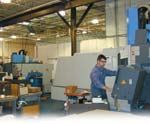


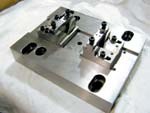
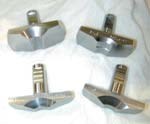
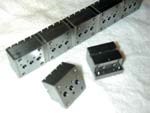




.png;maxWidth=300;quality=90)








.jpg;maxWidth=300;quality=90)





